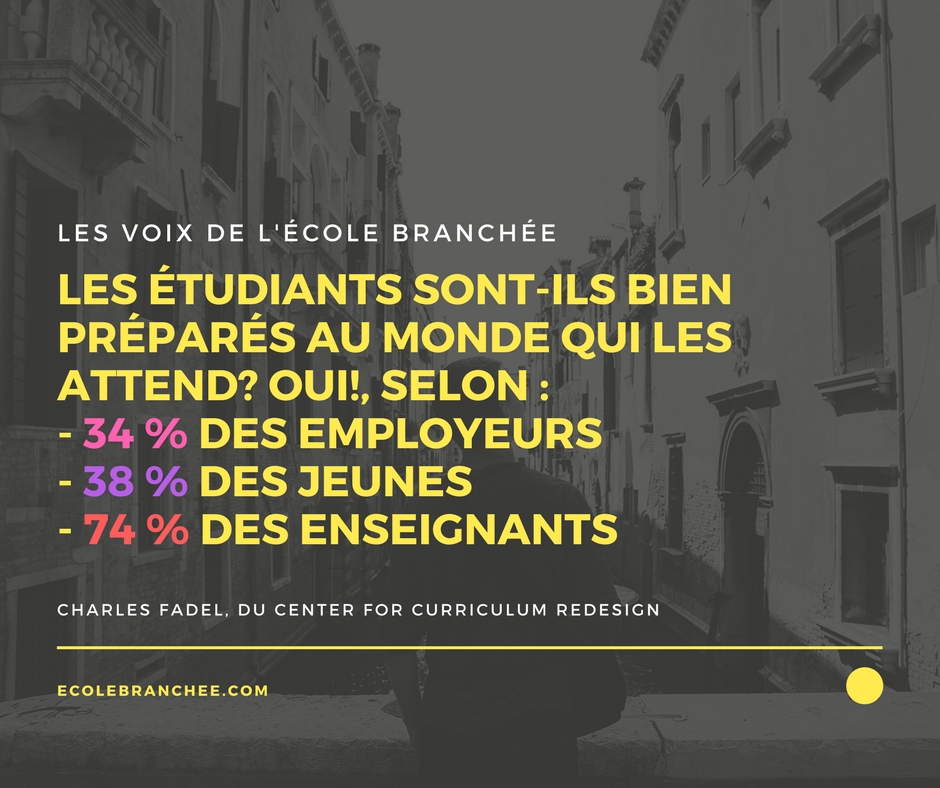Lors du 5e Sommet de l’iPad et du numérique en éducation, Mme Nancy Brousseau a partagé 22 approches qui favorisent l’innovation à l’école. (Pour les sceptiques : le mot « technologie » n’apparaît qu’une fois!)
Nancy Brousseau est directrice générale de la FÉEP (Fédération des établissements d’enseignement privés). Lors du dernier Sommet de l’iPad et du numérique en éducation, qui se tenait à Montréal les 18 et 19 mai 2017, elle a prononcé une conférence intitulée L’innovation en éducation : Resistance is futile.
C’est par trois questions qu’elle a abordé le vaste sujet de l’innovation en éducation :
- Pourquoi faire?
- Quoi faire?
- Comment faire?
En voici un petit compte-rendu.
L’innovation : pourquoi faire?
C’est par deux statistiques qu’elle a abordé la question du Pourquoi. À partir des résultats du ministère de l’Éducation et de l’Enseignement supérieur du Québec (MEES) au sujet de la diplomation des élèves du secondaire, elle a rappelé qu’uniquement 63 % d’entre eux terminent leurs études dans les cinq ans prévus. De plus, une enquête de la FÉEP réalisée auprès de plus de 44 000 élèves indique que seulement 45 % des élèves se disent motivés par leurs études. Aussi, plus la fin du secondaire approche, plus la proportion baisse.
Mme Brousseau a partagé deux citations pour susciter la réflexion : « Lorsque la vitesse d’évolution du marché dépasse celle de l’organisation, la fin est proche », dit Jack Welch. De plus, selon Erica Jong, « Ne rien risquer est un risque encore plus grand ».
L’innovation : quoi faire?
Mme Brousseau a ensuite proposé 22 pistes pour placer l’école en mode innovation.
- Personnaliser : apprentissage, parcours, curriculum, évaluation…
- Assouplir le modèle unitaire : 1 enseignant, 1 groupe, 1 classe, 1 matière
- Repenser l’exploitation du temps : horaire, calendrier, période…
- Repenser l’utilisation de l’espace : locaux, mobilier, extérieur…
- Assouplir la notion de présence, de fréquentation scolaire
- Repenser la notion de groupe
- Élargir le répertoire pédagogique de méthodes innovantes et éprouvées
- Consulter la recherche et l’appliquer
- Favoriser les apprentissages authentiques
- Optimiser l’utilisation de la technologie
- Rendre autonome et impliquer les élèves
- Redéfinir le rôle de l’enseignant : coach, conseiller, accompagnateur…
- Définir le profil de sortie des élèves et actualiser le curriculum en conséquence
- Favoriser un apprentissage social et collaboratif
- Revoir le rôle, l’objet et le modèle d’évaluation
- Investir ses ressources sur les enseignants
- Impliquer la communauté dans les décisions (élèves, personnel, parents…)
- Trouver son ADN, sa vision, et la porter collectivement
- S’ouvrir au monde, réseauter
- Développer une culture de développement professionnel
- Développer une culture de collaboration, de partage d’expertise
- Développer une culture d’innovation, penser autrement, être créatif
L’innovation : comment faire?
Nancy Brousseau estime qu’il faut commencer par soi et faire le deuil de son passé pédagogique pour pouvoir s’ouvrir au futur. On peut même passer par ces étapes : choc, déni, colère, tristesse, résignation, acceptation, reconstruction. Avec les capacités grandissantes du numérique et la venue de l’intelligence artificielle, le monde est VICA : volatile, incertain, complexe, ambigu.
Vers la fin de sa conférence, Mme Brousseau a partagé une statistique préoccupante de Charles Fadel, du Center for Curriculum Redesign. Les étudiants sont-ils bien préparés au monde qui les attend? Seuls 34 % des employeurs et 38 % des jeunes le pensent, alors que 74 % des enseignants en sont convaincus…

Pour consulter la présentation de Nancy Brousseau, cliquez ici.






